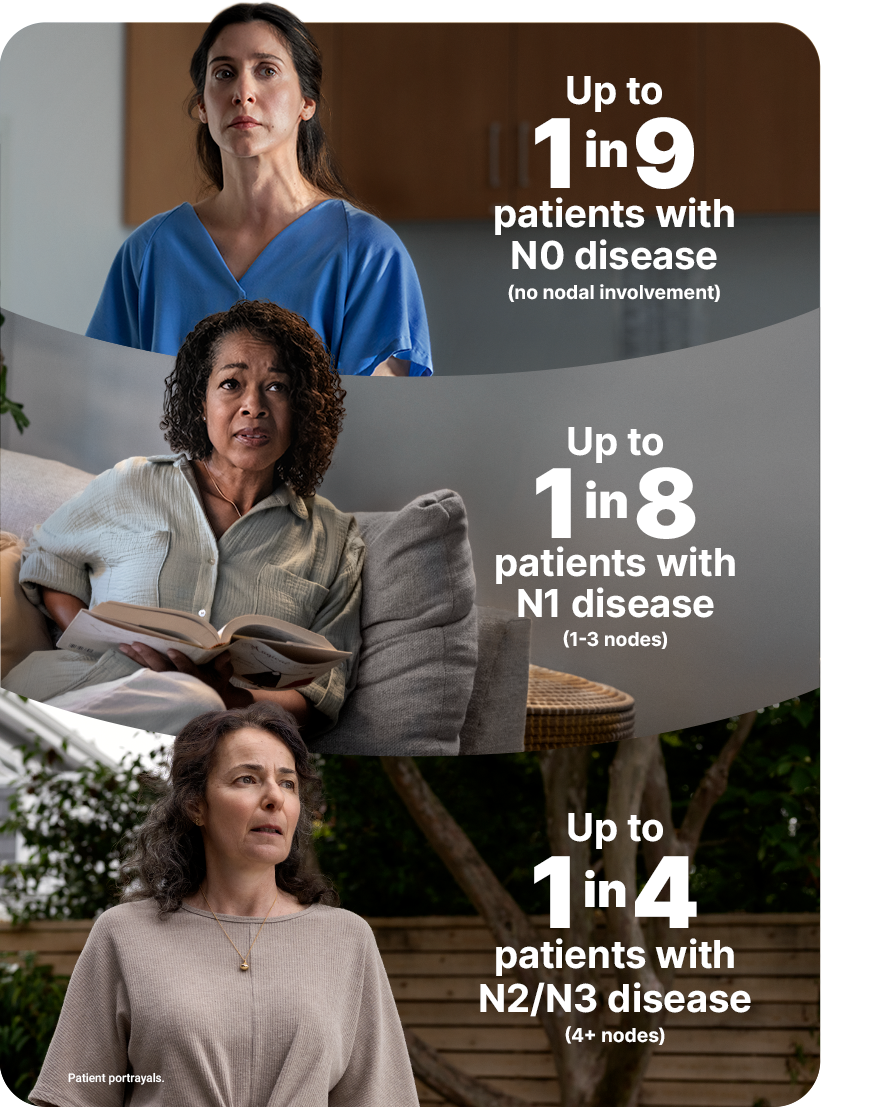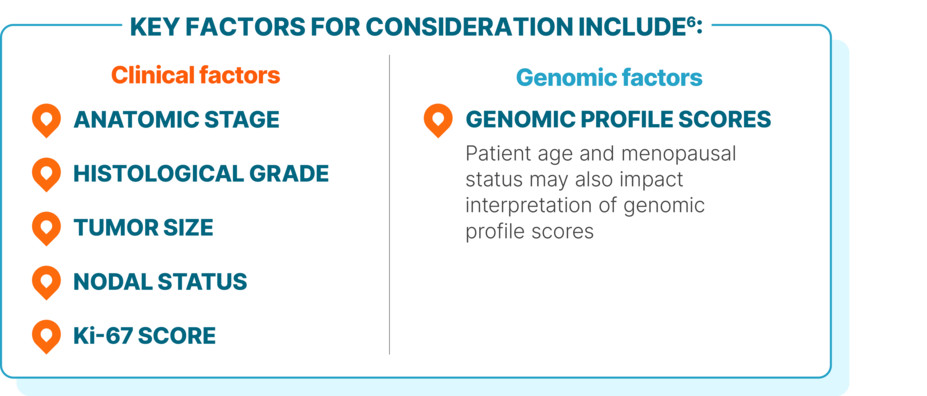She's worried. And rightly so.
For patients like her, with stage II or III HR+/HER2- eBC, risk of recurrence isn’t a fleeting thought. It’s a persistent concern—one that she’ll live with for the rest of her life.1
Despite treatment with adjuvant ET, patients with stage II/III HR+/HER2- eBC remain at risk of recurrence with incurable metastatic disease—even if they have no or low nodal involvement.2-4
Risk is real. Just how real, exactly?
Risk of recurrence within 3 years 3,4
The 3-year risk of recurrence rates are based on iDFS outcomes published for patients with HR+/HER2- eBC in select CDK4/6 inhibitor clinical trials, who were also treated with standard ET, including tamoxifen. KISQALI is not indicated for concomitant use with tamoxifen due to an increased risk for QT prolongation. Data are from control arms only; no comparisons should be made between results from CDK4/6 inhibitor trial arms.3-5
CDK, cyclin-dependent kinase; iDFS, invasive disease-free survival; N, nodal status.


